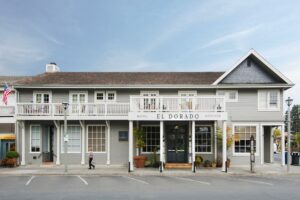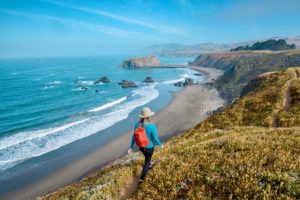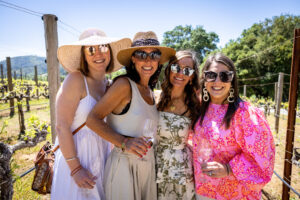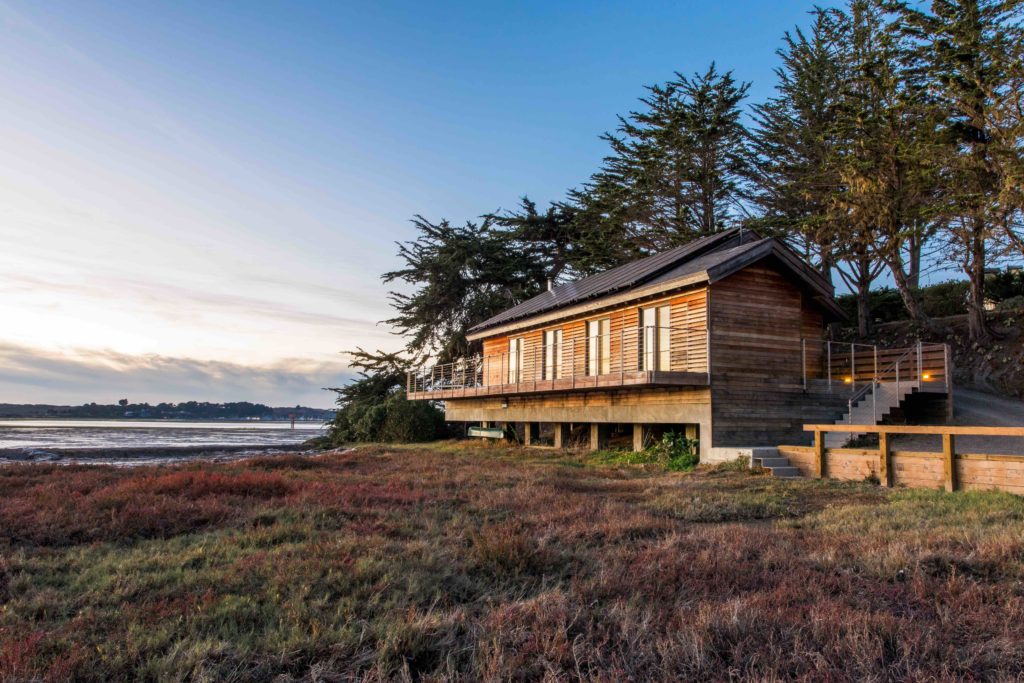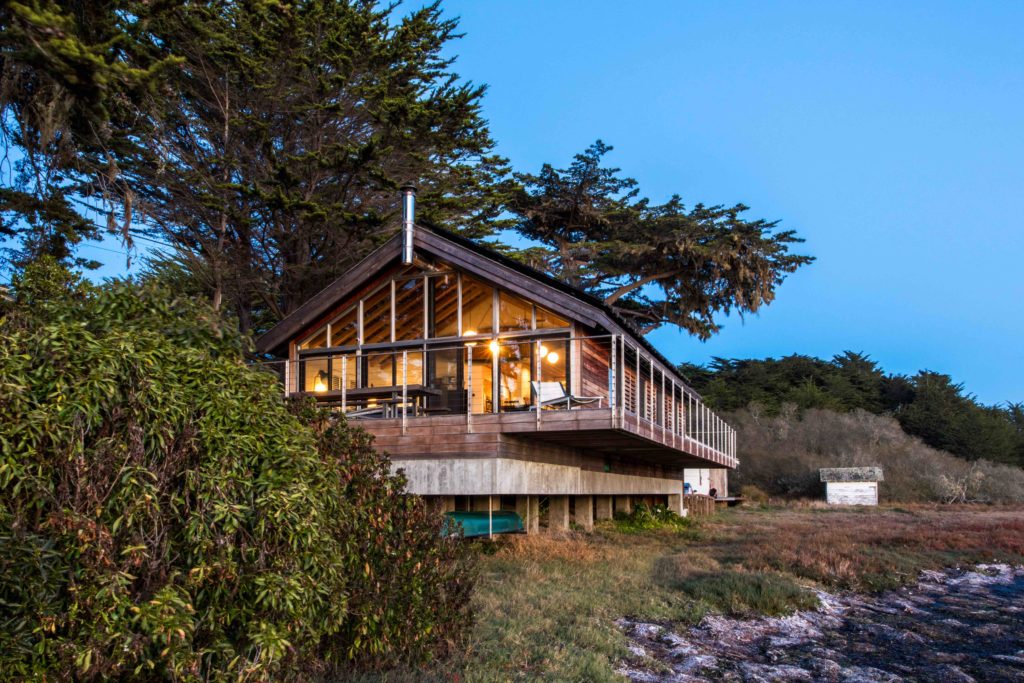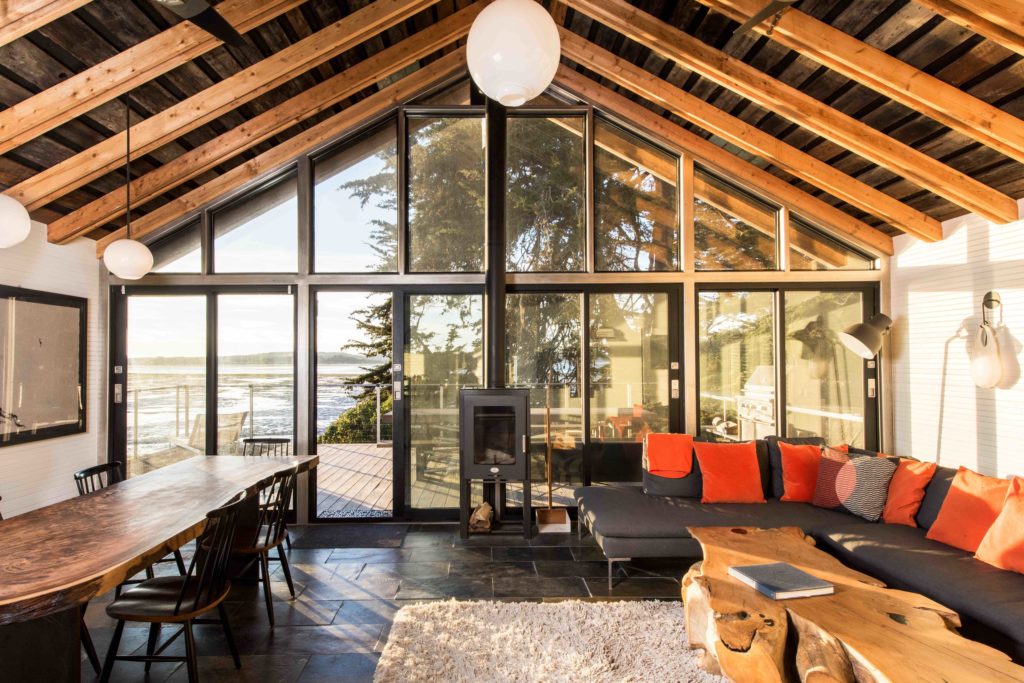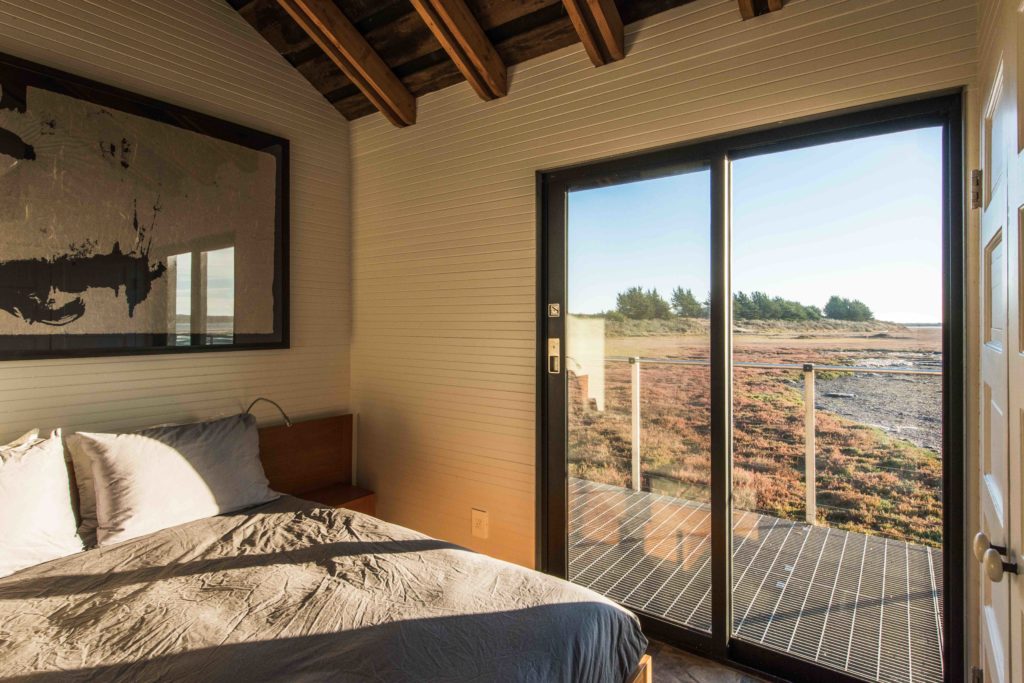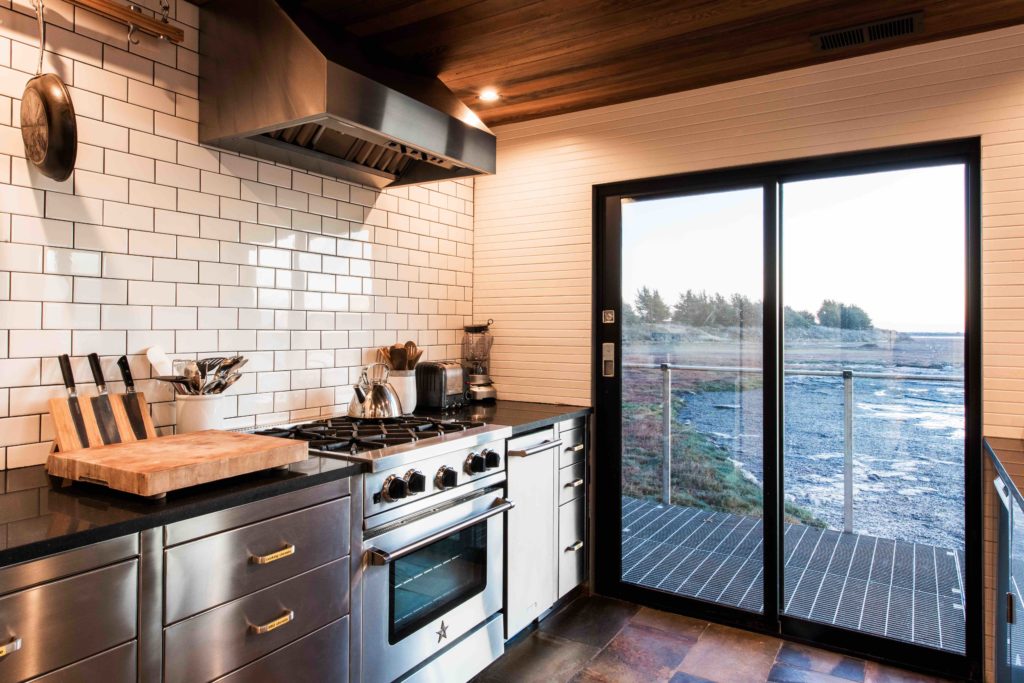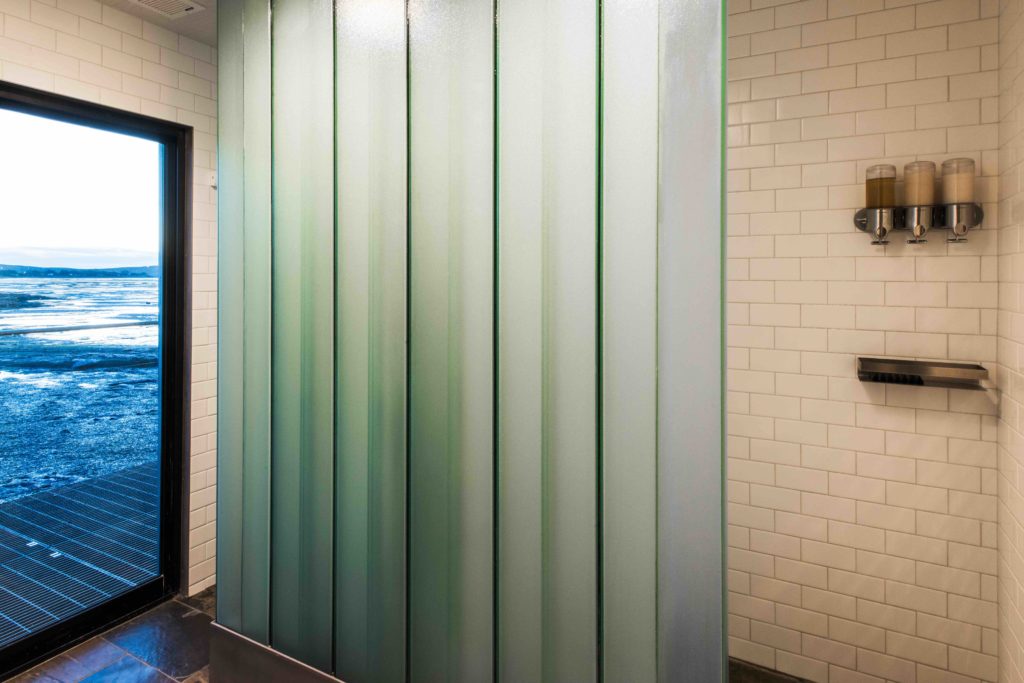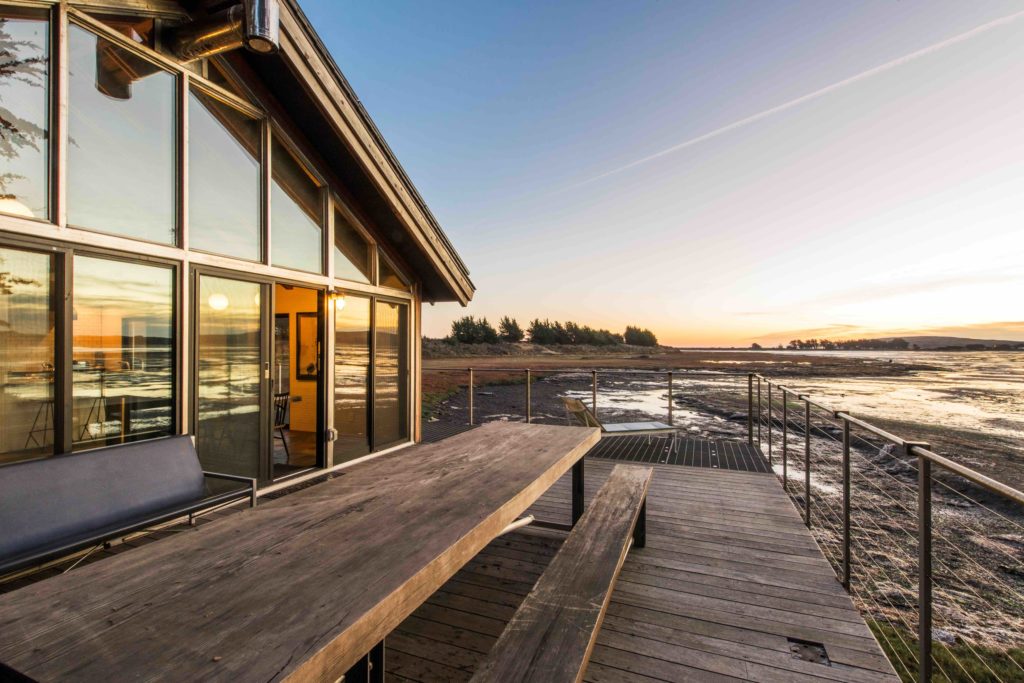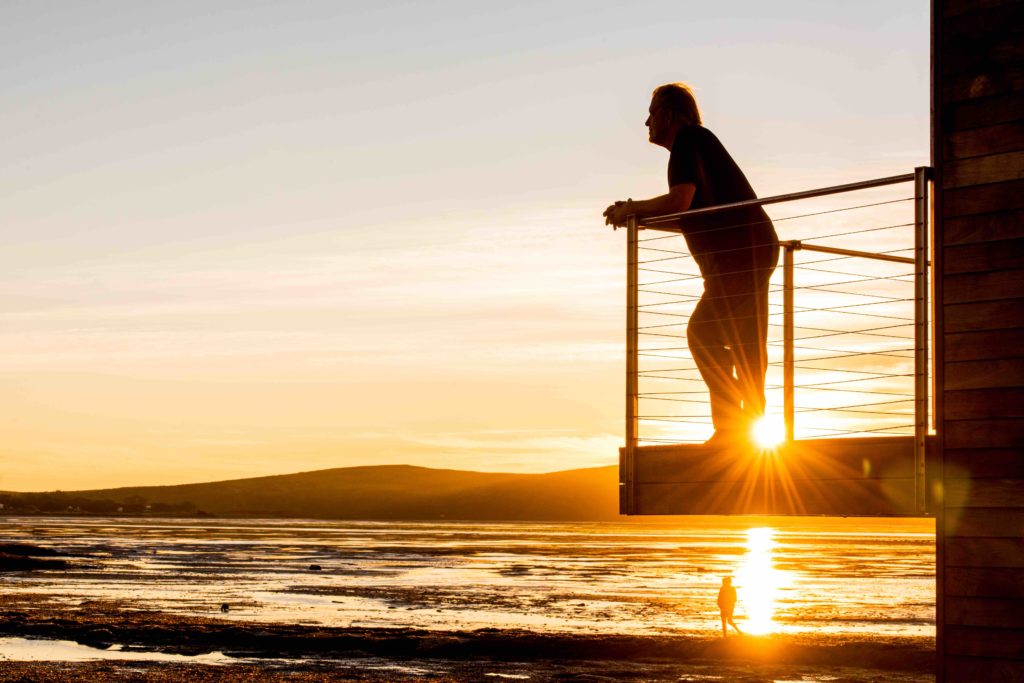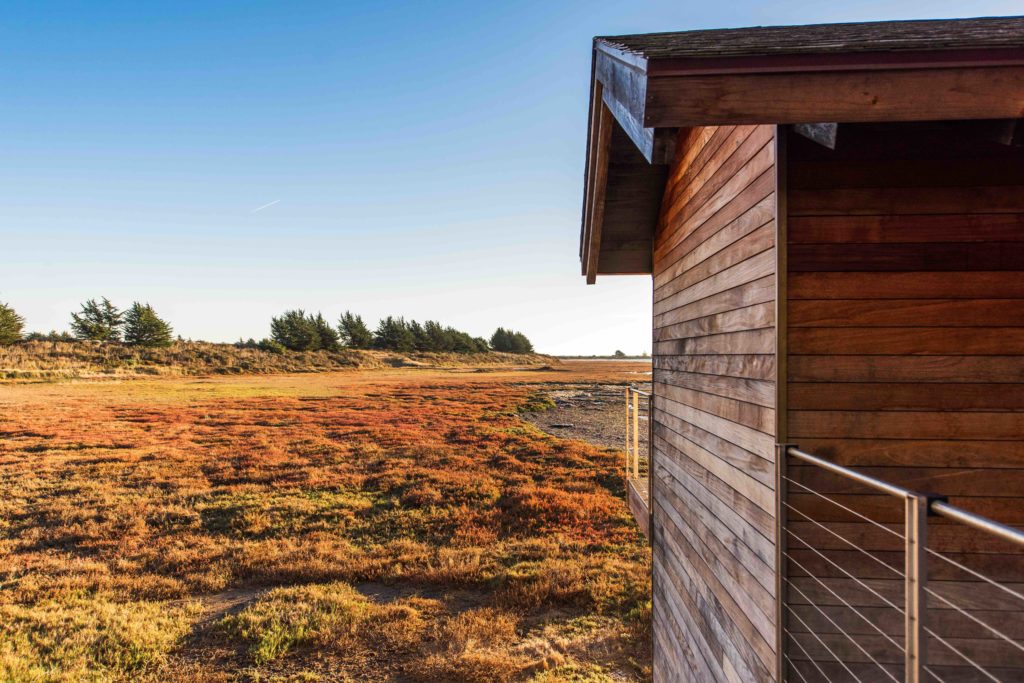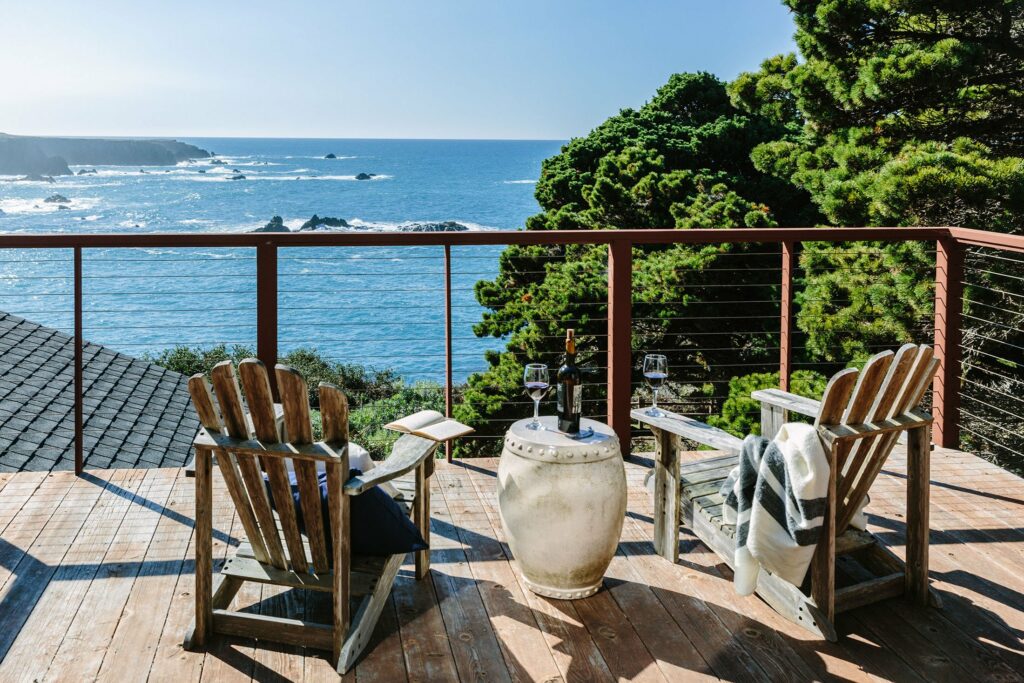Architect Olle Lundberg had to laugh when the real estate agent brought him to a 1930s fishing cabin on the shore of Bodega Bay.
“What happened to the rule about finding a house with good bones?” he joked. The house was undeniably in terrible condition: partially collapsed into the water, with a badly sagging floor 18 inches off square. But the site was like nothing else, a completely private cove on a shoulder of the bay with no other houses in sight — just a sweeping, uninterrupted water view. It wasn’t hard to imagine the promise of a setting like that.
But it was his black Lab puppy, Curly, who sealed the deal, running off to romp in the sand, getting incredibly mucky and loving every moment. So Lundberg and wife Mary Breuer bought the cabin, and they named it Curly’s Cove. As the couple likes to say, it’s hard to argue with a dog.
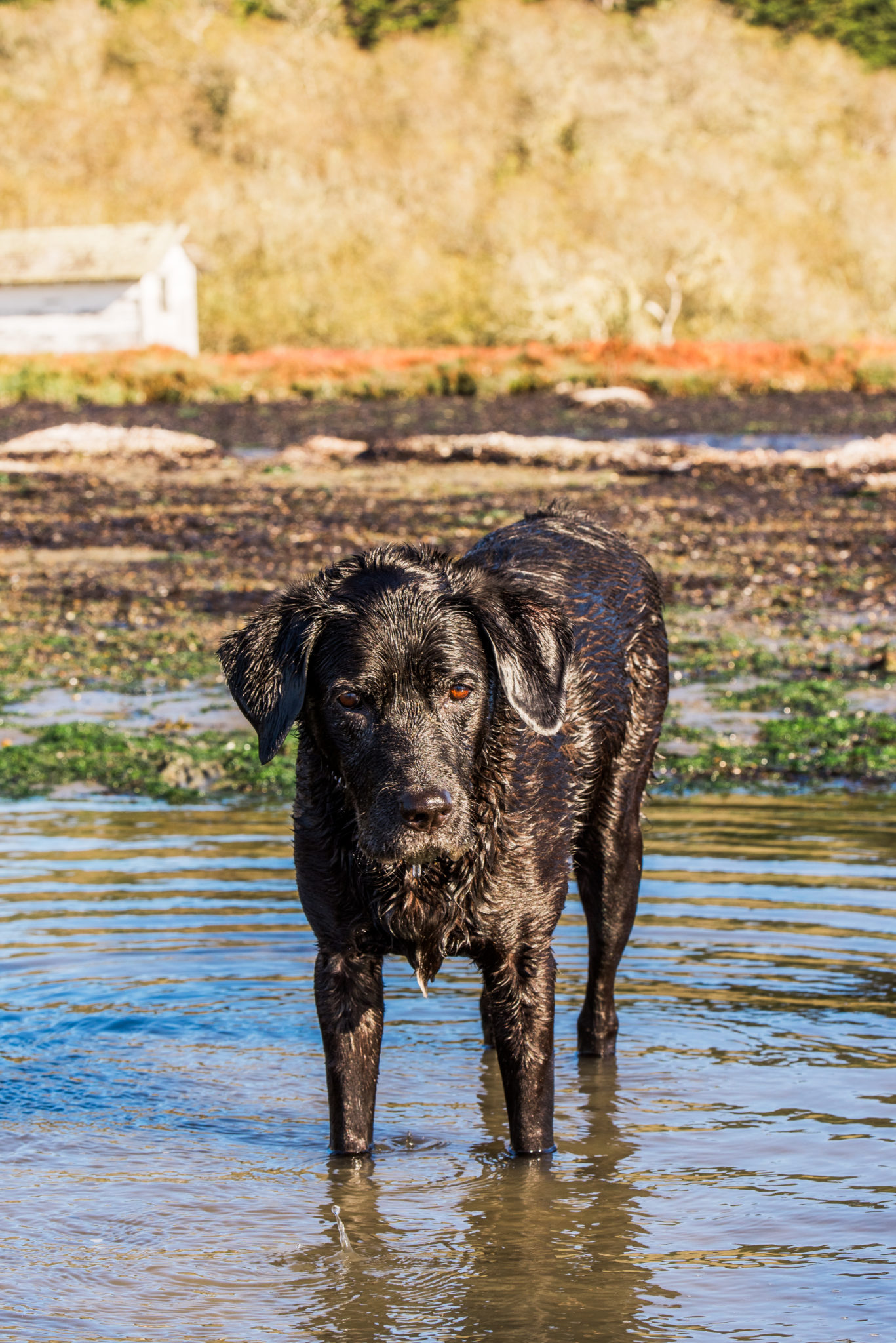
Lundberg leads a groundbreaking San Francisco architectural practice known for creatively reimagining structures with a strong sense of place (for a decade, he and Mary made their home in a one-of-a-kind decommissioned 7,000-square-foot car ferry docked in San Francisco Bay). He knew right away what kind of building the couple could create at Curly’s Cove, one that would keep the basic structure of the traditional fishing shack but add a modern feel with a massive wall of glass facing the bay. “That glass wall would be the big gesture. You’ll walk in and immediately see that view, and nothing else matters.”
Remodeling the cabin and making it structurally sound was a two-year process. Because the home’s existing wooden pier foundation sat at the edge of the bay, the California Coastal Commission had sway over what could be done on the site.
Respectful of the need to preserve the delicate ecosystem, Lundberg created a plan that removed the falling-down piers and moved the entire cabin back from the edge of the bay onto a shored-up concrete foundation. “We built the new foundation in line with the house, but 10 feet further back, and literally rolled the house onto the new foundation. It was a little bit scary when we did that, because you don’t know if the whole house is just going to fall apart, but we had plywood sheathing on the walls to make it stouter, and it worked just fine.”
On the exterior, a new deck cantilevers out over the edge of the wetland and surrounds the home on two sides, with metal grates that allow light to shine through and reach the plants that grow underneath. The old house came with a patchwork of green asphalt shingles on the exterior which, due to the sagging foundation, were all out of whack and looked a bit like the scales of a dragon, Lundberg says. He reimagined the siding with narrow strips of Ipe wood, which over time has faded to a silvery grey, reminiscent of the cabin’s original redwood siding. A fireproof slate roof, topped with solar panels, also hews to the original rustic character of the fishing cabin. “One of my goals as an architect is to do buildings that blend in with the landscape and become better, not worse, as they age. It’s about understanding the materials, how they weather and change.”
Inside, Lundberg says, the whole idea was to not lose the feel of the old building but open it up to the bay as much as possible. All of the rooms in the 1,100-square-foot space except the master bedroom connect through sliding doors out onto the deck. The great room has cathedral ceilings, a modern wood-burning fireplace, and those incredible views through the new glass wall. Two simple bedrooms and a single bath are connected by a hallway that runs front to back through the center of the home.
That hall is lined with photos Lundberg took of the construction process. And a chef’s kitchen, with rugged stainless-steel cabinets and a commercial-grade stove, is open to the main living room.
Lundberg saved the vintage redwood beadboard that came with the house and managed to accumulate enough to cover all of the interior walls. “It was a crazy zebra look with all the old colors, which was actually kind of cool, but we ended up painting it white,” he says. “It’s got splices everywhere, and you can see the drips from all the old paint. It’s by no means a perfect interior wall, which is kind of the point.” And because it’s the beach, Lundberg installed a new slate floor throughout, which stands up to muddy dogs and sandy feet. “The slate captures the colors around here, tans and grays and blues, a really nice mottled patina that does well with the palette of nature outside.”
Furnishings mainly came second-hand from a website called Chairish, except for the custom redwood slab dining table and a coffee table Lundberg made in his studio workshop from the root ball of an Indonesian teak tree, which weighs over a thousand pounds. “My idea was for it to look like a big piece of driftwood that might have floated up on the tide,” Lundberg explains.
It’s a comfortable, easy-living home that Lundberg uses as a getaway with friends and family and occasionally rents out to guests. Days there are relaxed: walking down the lane to Fishetarian for fresh fish to grill out on the deck, heading out on the bay for a paddle in the canoe, and settling by the fire to watch dramatic winter storms roll in. The comings and goings of birds on the bay, including sandpipers, herons, and all sorts of gulls, adds to the peacefulness in the rainy season.
“It’s a favorite spot for birds to come down and feed, particularly in the morning and at sunset. Sometimes you’ll have a hundred pelicans out there feeding on the herring. They don’t pay much attention to people, and especially if the tide is in, they’ll come almost to the edge of the building.”
Big winter storms also flush out the waters of the bay, washing up all sorts of flotsam and jetsam — old wooden buoys, telephone poles, even, once, a small wayward sailboat — on the edge of the shore.
That ever-changing line of shore has become one of the couple’s favorite places in the world, made special by the time they spend romping on the beach with Curly, now 9 years old but not slowing down much. “She likes you to sit there and throw a stick into the water or hours on end. That’s what she lives for. She’ll go out crashing into the water and get as muddy as possible, and then come in and sleep for eight hours. It’s the best.”
Resources
Architect: Lundberg Design, San Francisco / lundbergdesign.com
Structural Engineer: Strandberg Engineering, San Francisco / strandbergeng.com
Builder: Pat Clark Construction, Gualala, CA
Rental info: Bodega Bay Escapes, bodegabayescapes.com


